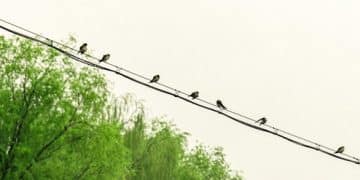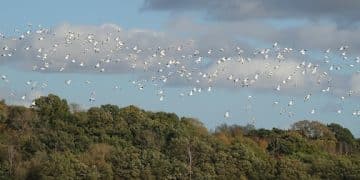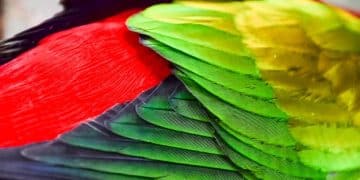Building a Backyard Wildlife Habitat in the US
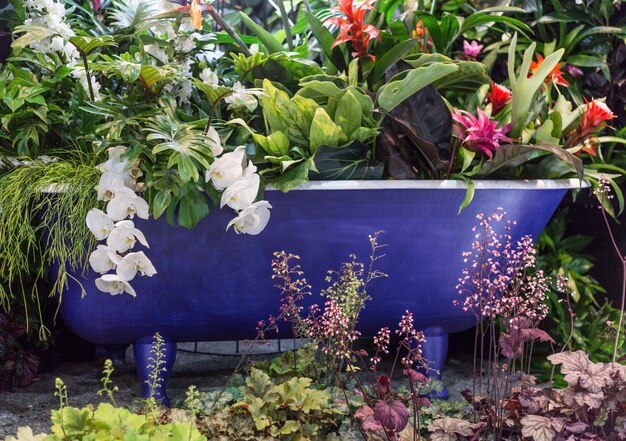
Building a backyard wildlife habitat in the US involves creating a space that provides food, water, shelter, and places to raise young for native birds, butterflies, and other animals, enhancing biodiversity and promoting a healthy ecosystem.
Transforming your backyard into a thriving building a backyard wildlife habitat not only enhances your property’s beauty but also plays a crucial role in supporting local ecosystems by attracting native birds, butterflies, and various other fascinating animals throughout the US.
Why Build a Wildlife Habitat in Your Backyard?
Creating a wildlife habitat in your backyard offers numerous benefits, both for you and the environment. It transforms your outdoor space into a sanctuary for local fauna, providing essential resources like food, water, and shelter. By doing so, you contribute to the conservation of biodiversity and the overall health of the ecosystem.
Beyond the ecological advantages, a wildlife-friendly backyard can be incredibly rewarding personally. Observing the vibrant activity of birds, butterflies, and other creatures brings a sense of tranquility and connection with nature right to your doorstep.
Supporting Local Ecosystems
Backyard habitats act as crucial stepping stones for wildlife, especially in urban and suburban areas where natural habitats are fragmented. These small refuges provide corridors that allow animals to move safely between larger areas of natural habitat, promoting genetic diversity and resilience.
Educational Opportunities
A backyard wildlife habitat offers fantastic educational opportunities for both children and adults. It provides a firsthand look at the life cycles, behaviors, and interactions of different species, fostering a deeper understanding and appreciation of the natural world.
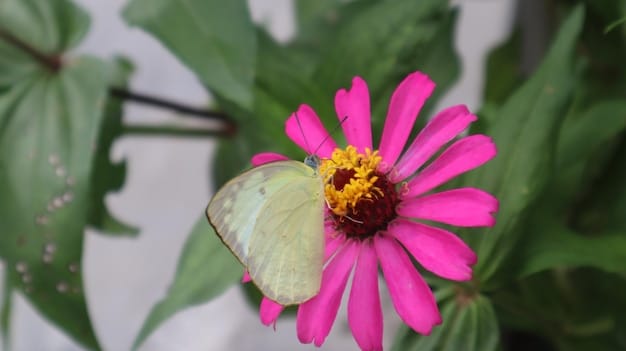
- Provides Resources: Offering food, water, and shelter is crucial for survival.
- Habitat Connectivity: Connects fragmented habitats, aiding animal movement.
- Ecological Balance: Enhances biodiversity and supports a healthy environment.
- Personal Enrichment: Offers a tranquil and rewarding connection with nature.
By creating even a small wildlife habitat, you can make a significant positive impact on the environment and enjoy the beauty and wonder of nature right outside your window. It’s a simple yet powerful way to contribute to conservation efforts and foster a deeper appreciation for the natural world.
Assessing Your Backyard and Planning
Before diving into gardening, it’s essential to assess your backyard thoroughly to understand its existing conditions and identify opportunities for improvement. This assessment will help you create a targeted plan that maximizes the habitat’s potential for attracting wildlife.
Consider factors such as sunlight exposure, soil type, drainage patterns, and existing vegetation. These elements will influence the types of plants you can grow and the specific wildlife species you can attract.
Evaluating Sunlight and Soil
Sunlight is a critical factor for plant growth, so observe how much sunlight different areas of your backyard receive throughout the day. Soil type affects drainage, nutrient availability, and pH levels, all of which impact plant health. Conducting a simple soil test can provide valuable information about your soil’s composition and nutrient content.
Identifying Existing Vegetation
Take inventory of the plants already growing in your backyard. Are they native or non-native? Do they provide food or shelter for wildlife? Removing invasive species and incorporating native plants can greatly enhance your habitat’s value.

- Observe: Monitor sunlight, soil, and drainage.
- Test: Conduct a soil test for pH and nutrient levels.
- Inventory: Identify existing plants and wildlife.
- Design: Create a plan that incorporates these elements.
By carefully assessing your backyard and planning accordingly, you can create a wildlife habitat that thrives and provides essential resources for local fauna. This thoughtful approach sets the foundation for a successful and sustainable backyard ecosystem.
Providing Food Sources for Wildlife
One of the primary ways to attract wildlife to your backyard is by providing ample food sources. Native plants are an excellent foundation for a wildlife-friendly garden, offering seeds, berries, nuts, and nectar that various animals rely on.
Supplementing native plants with additional food sources, such as bird feeders and supplemental plantings, can further enhance your habitat’s appeal and ensure a consistent supply of nourishment throughout the year.
Planting Native Species
Native plants are adapted to the local climate and soil conditions, making them easier to maintain and more beneficial to wildlife. They often have symbiotic relationships with native insects, birds, and mammals, providing specific nutrients and habitats that non-native plants cannot.
Using Bird Feeders Effectively
Bird feeders can be a great way to attract birds to your backyard, but it’s important to use them responsibly. Choose feeders that are appropriate for the types of birds you want to attract and keep them clean to prevent the spread of disease. Offering a variety of seeds, such as sunflower, millet, and thistle, can attract a diverse range of species.
- Native Plants: Plant seeds, berries, and nectar-rich flora.
- Bird Feeders: Use diverse seeds and keep feeders clean.
- Fruit Trees: Plant fruit-bearing trees suited to your climate.
- Nectar Sources: Attract butterflies and hummingbirds with nectar-rich flowers.
Providing a variety of food sources ensures that your backyard habitat supports a wide range of wildlife species. This diversity not only enhances the ecological value of your space but also provides endless opportunities for observation and enjoyment.
Creating a Water Source
Water is an essential element for all living creatures, and providing a reliable water source can significantly enhance your backyard wildlife habitat. Whether it’s a simple bird bath or a more elaborate pond, a water feature can attract a wide range of animals, from birds and butterflies to frogs and dragonflies.
Providing access to clean, fresh water is particularly important during hot summer months and cold winter periods when natural water sources may be scarce or frozen.
Bird Baths and Their Maintenance
Bird baths are a simple and effective way to provide water for birds. Choose a bird bath that is shallow and has a textured surface to provide secure footing. Regularly clean the bird bath to prevent algae growth and the spread of disease. Changing the water every few days keeps it fresh and inviting.
Building a Small Pond
A small pond can be a fantastic addition to a backyard wildlife habitat, offering a water source and a habitat for various aquatic creatures. Incorporate plants around the pond to provide shelter and attract insects, which, in turn, will attract birds and other animals. Ensure that the pond has a shallow end or ramp to allow animals to easily enter and exit.
- Bird Baths: Use shallow, textured baths and clean them regularly.
- Ponds: Create a pond with plants and shallow access points.
- Dripping Hoses: Offer a constant drip for butterflies and hummingbirds.
- Seasonal Availability: Ensure water is available year-round.
By providing a reliable water source, you can create a welcoming oasis for wildlife in your backyard. This water source not only supports the survival of local fauna but also adds aesthetic appeal and opportunities for observation to your outdoor space.
Providing Shelter and Nesting Sites
Adequate shelter and nesting sites are crucial for wildlife to thrive in your backyard. Providing places where animals can hide from predators, rest, and raise their young significantly enhances your habitat’s value. Incorporating a variety of natural and artificial structures can cater to the needs of different species.
Natural shelters, such as dense shrubs, trees, and leaf litter, provide cover and protection. Artificial structures, like birdhouses, bat houses, and brush piles, can supplement these natural offerings and create additional nesting and roosting opportunities.
Building Brush Piles
Brush piles are simple to create and provide excellent shelter for small mammals, reptiles, and insects. Simply stack branches, logs, and other woody debris in a designated area of your backyard. Over time, the brush pile will decompose, enriching the soil and creating a haven for various creatures.
Installing Birdhouses and Bat Houses
Birdhouses and bat houses offer secure nesting and roosting sites for these beneficial animals. Choose birdhouses that are appropriately sized for the species you want to attract and mount them in locations that offer protection from wind and predators. Bat houses should be mounted on poles or buildings, away from direct sunlight and human disturbance.
- Brush Piles: Create shelter for small animals and insects.
- Birdhouses: Provide nesting sites for various bird species.
- Bat Houses: Offer roosting locations for bats.
- Native Plants: Dense shrubs and trees offer natural cover.
By providing a variety of shelter and nesting options, you can create a safe and welcoming environment for wildlife in your backyard. This thoughtful approach not only enhances your habitat’s ecological value but also fosters a more vibrant and diverse ecosystem.
Maintaining Your Wildlife Habitat
Once you’ve established your backyard wildlife habitat, ongoing maintenance is crucial to ensure its long-term success. Regular care, such as weeding, pruning, and cleaning, helps keep your habitat healthy and attractive to wildlife.
Sustainable gardening practices, such as avoiding pesticides and using organic fertilizers, are also essential for maintaining a healthy and balanced ecosystem.
Weeding and Pruning
Regularly remove invasive plants that can outcompete native species and disrupt the balance of your habitat. Prune trees and shrubs to maintain their shape and health, and to encourage flowering and fruiting, which provide valuable food sources for wildlife.
Avoiding Pesticides and Using Organic Fertilizers
Pesticides can harm beneficial insects, birds, and other animals, so it’s best to avoid them altogether. Instead, use organic pest control methods, such as handpicking pests, using insecticidal soap, or introducing beneficial insects like ladybugs. Organic fertilizers provide nutrients to plants without harming the environment or wildlife.
- Weeding: Remove invasive plants regularly.
- Pruning: Maintain plant health and encourage fruiting.
- Pesticide-Free: Avoid harmful chemicals.
- Organic Fertilizers: Use natural nutrients for plant health.
Maintaining your wildlife habitat through regular care and sustainable practices ensures its ongoing health and value to local wildlife. This consistent effort not only benefits the environment but also provides you with a beautiful and rewarding outdoor space for years to come.
| Key Aspect | Brief Description |
|---|---|
| 🌱 Native Plants | Provide food and shelter for local wildlife. |
| 💧 Water Source | Essential for attracting birds, butterflies, and other animals. |
| 🏠 Shelter | Provides protection from predators and weather. |
| 🚫 No Pesticides | Keeps the habitat safe for all wildlife. |
FAQ
A wildlife habitat primarily needs food, water, shelter, and places for animals to raise their young. Native plants, a water source like a bird bath, and natural shelters are essential.
Native plants provide food sources, such as seeds, berries, and nectar, that local wildlife species have evolved to rely on. They also provide shelter and nesting sites.
Pesticides can harm beneficial insects, birds, and other animals that are part of the ecosystem. They can also contaminate water sources and disrupt the food chain.
Clean the bird bath regularly, every few days, to prevent algae growth and the spread of disease. Change the water frequently to keep it fresh and inviting for birds.
A brush pile is a stack of branches, logs, and other woody debris that provides shelter for small mammals, reptiles, and insects. It’s a simple way to create a habitat feature in your backyard.
Conclusion
Creating a building a backyard wildlife habitat in the US is a rewarding endeavor that benefits both the environment and your own well-being. By providing food, water, shelter, and nesting sites, you can attract a variety of native birds, butterflies, and other animals, enhancing biodiversity and creating a vibrant, sustainable ecosystem right outside your door.

